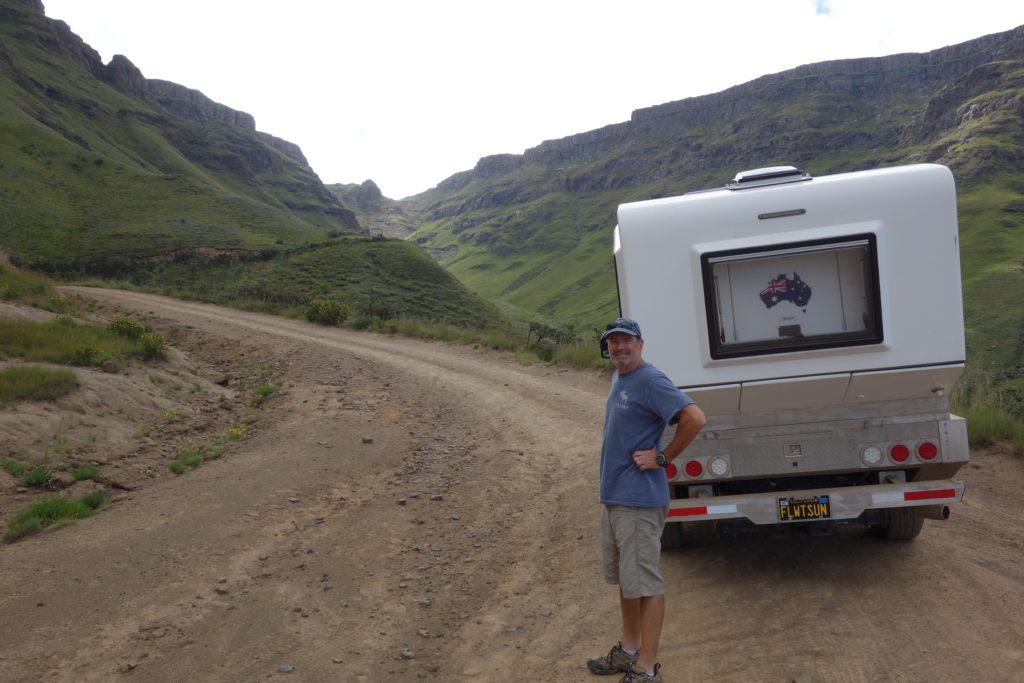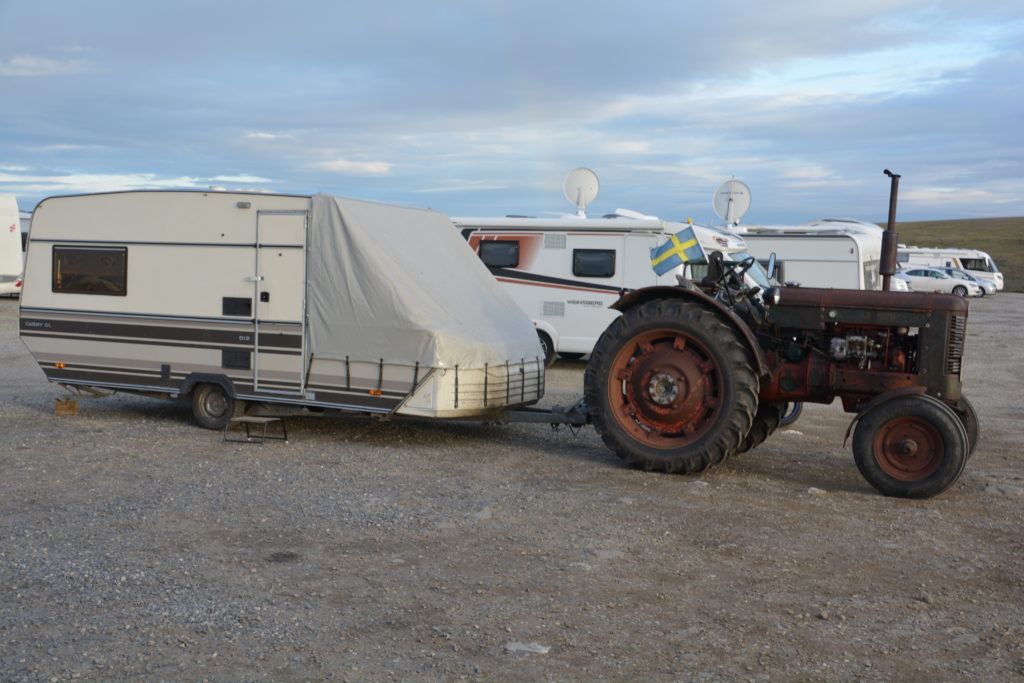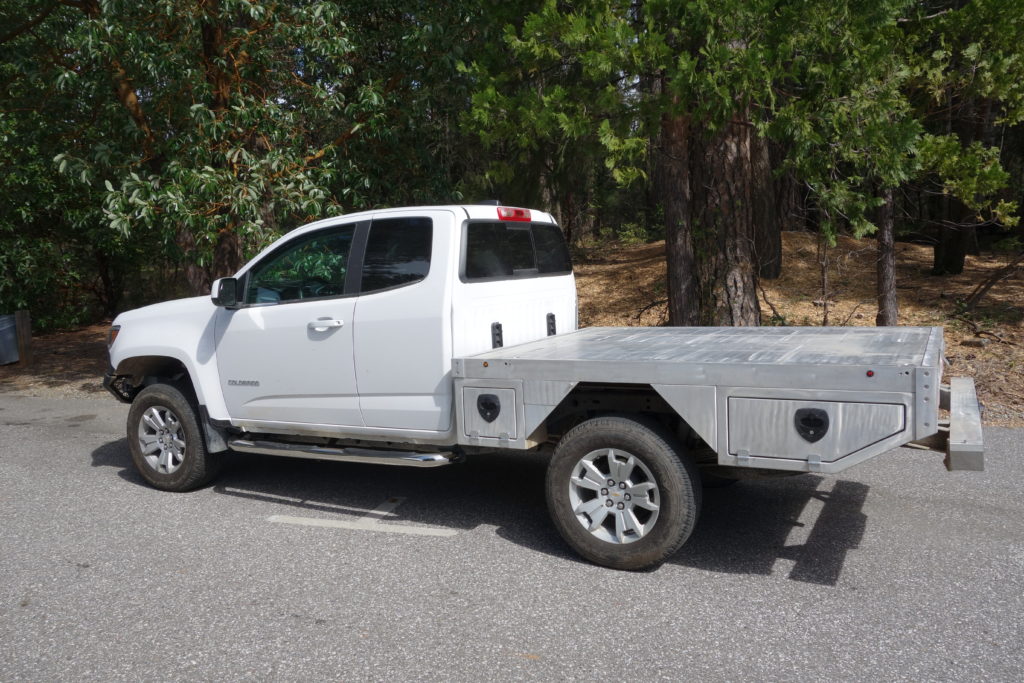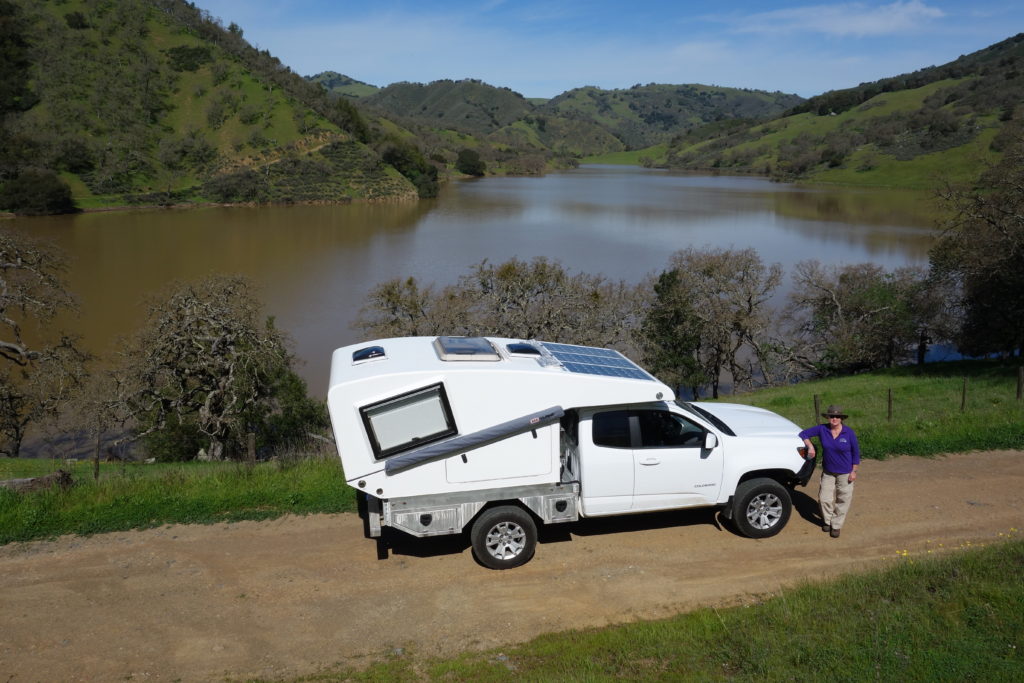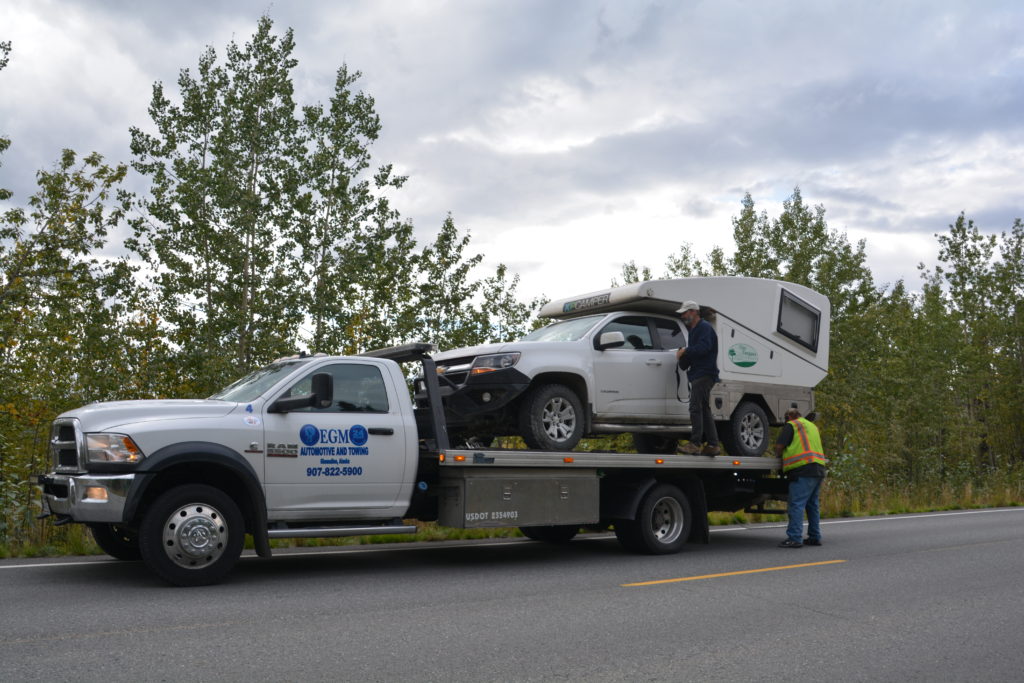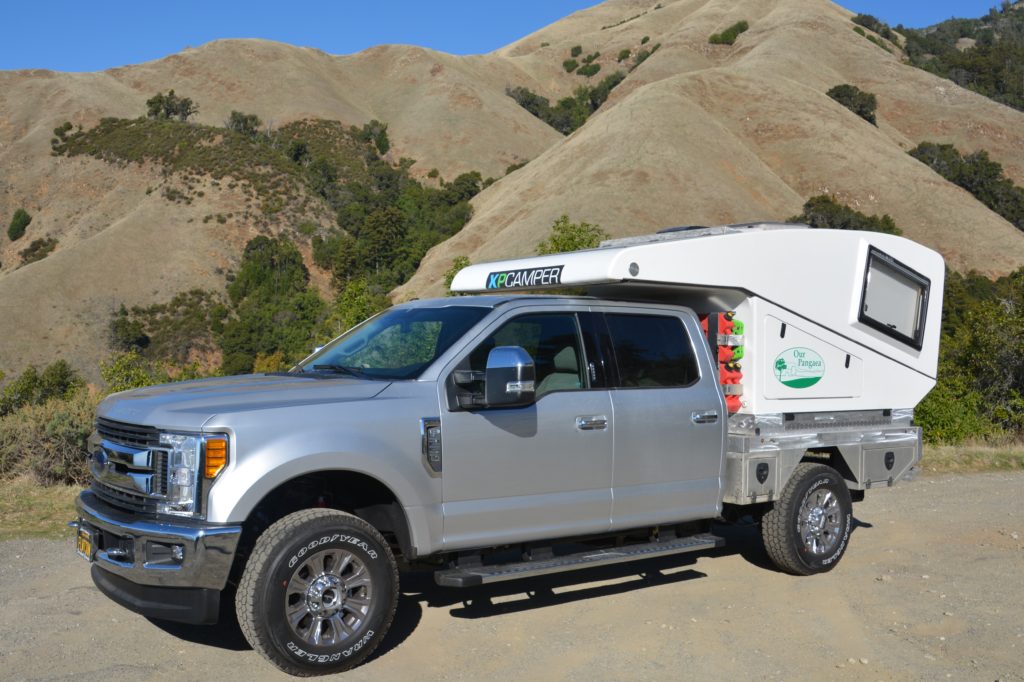No great overland adventure is complete without the third member of the team – the truck-camper. A truck-camper combination provides everything an erstwhile adventurous couple needs – transport, accommodation, security, comfort, reliability, storage and cred. Without a good truck and camper combination you simply can’t drive from continent to continent over an extended period of time.
We endlessly researched what the best truck and camper combination might be to fit our specific needs. We were very experienced in Australia with our Toyota Landcruiser and roof top tent but we needed a more secure and all-weather solution for our Follow the Sun journey. We also needed a reliable and roomy four-wheel drive truck that could carry our chosen camper. And we needed a camper that provided the appropriate room, comfort and security. And all of this as cheap as possible.
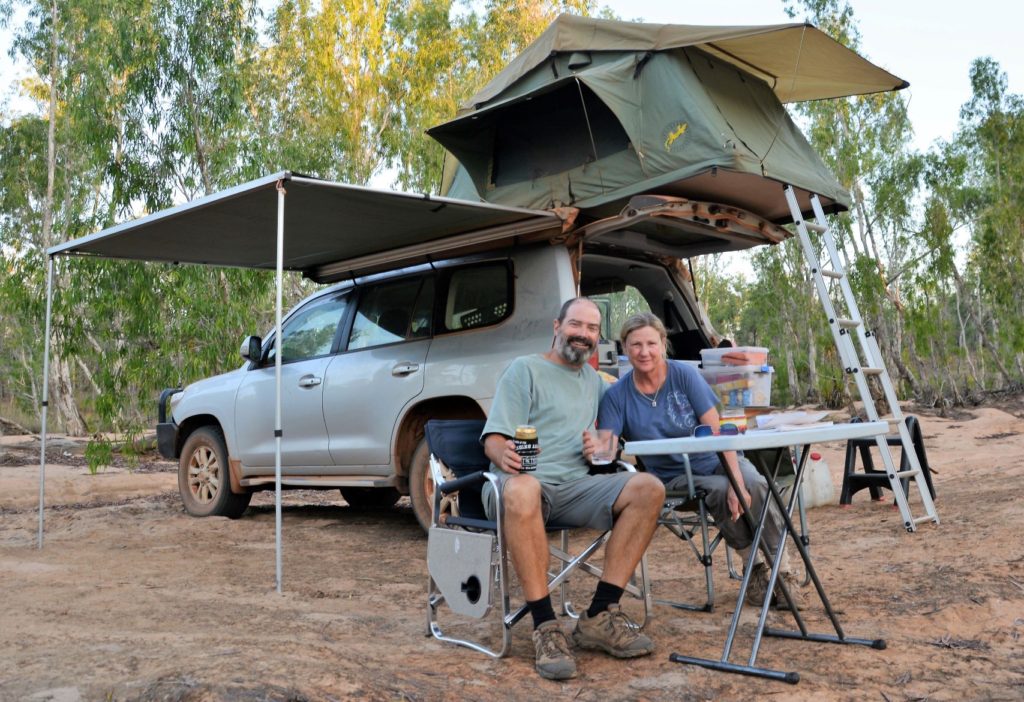
Living the dream…Julie and I with our Landcruiser and roof top tent in the Kimberley of Western Australia
In the end we decided to choose the camper first which then drove some of our choices of what truck to buy. After considerable research we chose the XPCamper V2 hard shell pop-up camper made by the small company called XPCamper in northern California (don’t bother googling them, they no longer exist). This turned out to be somewhat of a poisoned chalice because despite loving our V2 and it meeting many of our requirements the company itself was a disaster and as our problems with the camper mounted while we passed through faraway places their solution was to simply abandon us. Nice.
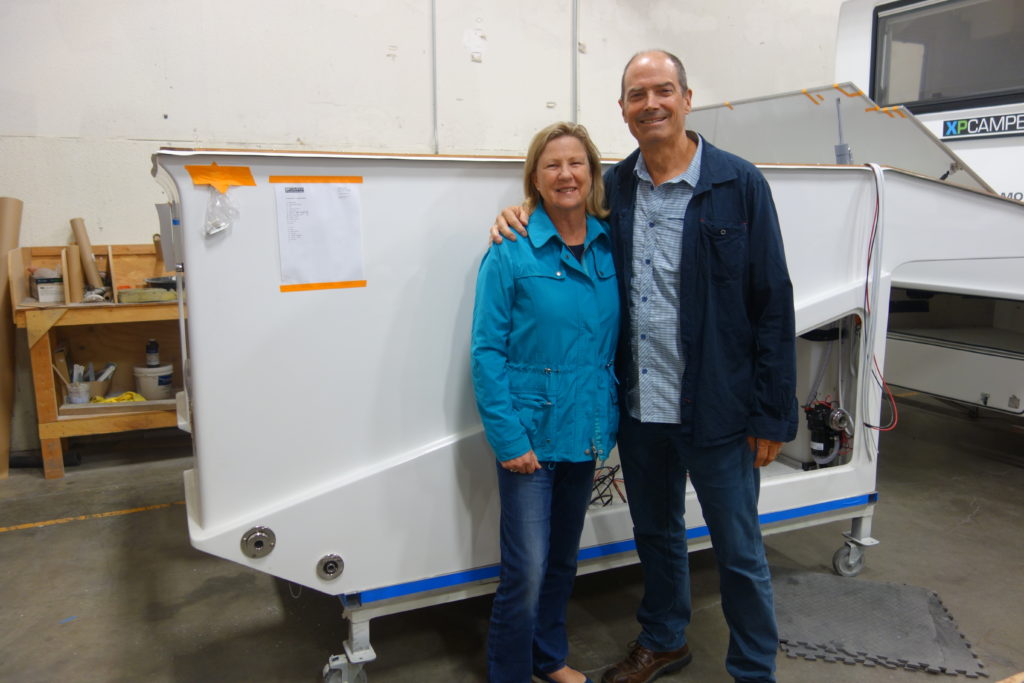
Our camper was months and months late from the original schedule – here we are on a visit to the factory to see what progress had been made (not much)
XPCamper also insisted that we had to buy a mid-sized pick-up truck because they said the V2 camper wouldn’t fit on a large full-sized truck like a Dodge Ram 2500 or a Ford F250 which had been our first choice. In the end we chose a very impressive, if somewhat under-sized for the task, Chevrolet Colorado Extended Cab V6. The Colorado was easy to drive but its GVM (Gross Vehicle Mass, also known as gross vehicle weight rating, essentially how much total weight the truck could carry) wasn’t sufficient to carry the weight of the camper so we spent a substantial amount of money on after-market heavy duty shocks, air bags and extra suspension leafs to help it carry the load.
In the end it was all for naught because the rough roads of the Yukon and Alaska broke the rear differential of the Colorado not once but twice. You can read more about our travails in Alaska here and for our second major breakdown try here. Out of warranty, out of pocket for the significant repair costs and probably outside our insurance due to being excessively heavy, we limped back to California where I finally convinced XPCamper that the V2 camper could fit on a larger truck…and then proceeded to trade in the limping Colorado for a brand new shiny Ford F250. Now we’re talking!
The combination of the big Ford and the V2 camper has worked well for us across three more continents and countless miles, potholes, beaches, rocks, gravel and everything in between. Yes, it is much more expensive to run and much harder to park but we love its reliability and go-anywhere capabilities. The whole experience of being forced to buy the wrong truck for the camper and then having to upgrade it later on, plus the enormous cost, was very stressful and taxing on us but we finally got to where we want to be – travelling the world in a reliable truck and a comfy camper – our beloved Tramp.

